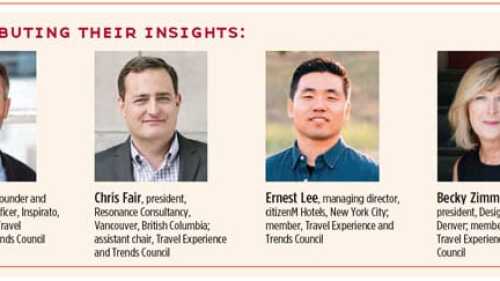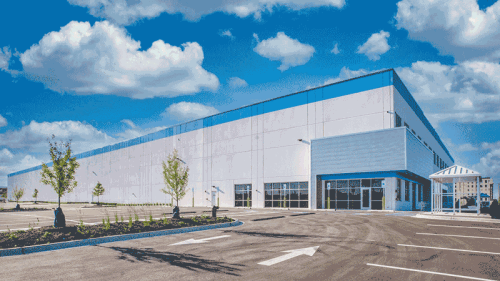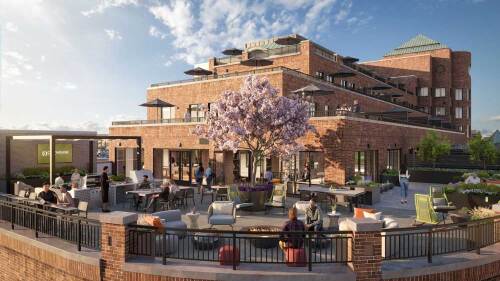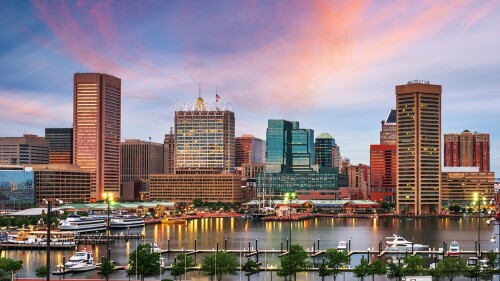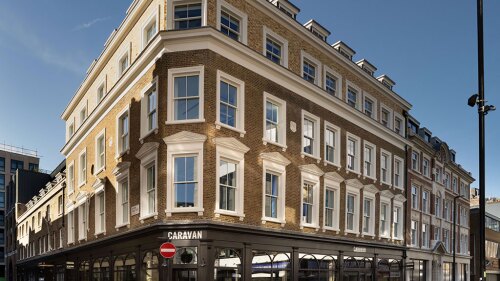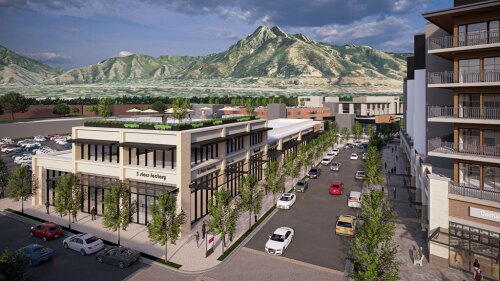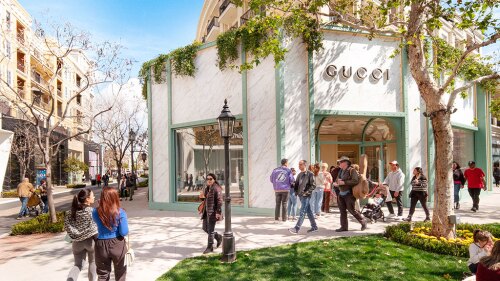Property Types
Hotels and Resorts
Wise choices in fixtures, finishes, and functions may draw guests’ attention.
How are tourism trends shaking up the real estate industry?
The InterContinental Shanghai Wonderland Hotel in China’s Songjiang District, near Shanghai, appears modest when approached from ground level because only two storeys project above ground and green roofs help them blend into the surrounding greenery. But when guests step inside, they see the dramatic construction, attached to the rock like a hanging garden.
Industrial
Solar energy solutions provider Wunder has closed a deal with Blackstone Credit portfolio company ClearGen to fund solar energy systems on commercial properties.
ULI MEMBER–ONLY CONTENT: The dramatic increase in online shopping in the United States has only further increased the appetite for properties close to population centers.
Global growth in e-commerce spurred by the coronavirus pandemic is boosting investor interest in a “new economy” asset class dominated by data centers and logistics facilities, speakers said in early September at a session during the ULI Asia Pacific REImagine conference.
Mixed-Use
The Covid-19 pandemic led to a foundational shift in how and where people work. As the real estate industry has sought to better understand how the pandemic has affected cities as a whole, the concept of the “urban doom loop” has frequently been mentioned as one of the most negative effects of the global health crisis, particularly in the U.S.
Kansas City’s Berkley Riverfront, on the banks of the Missouri River, is rapidly becoming one of the most promising urban developments in North America. With a history rooted in trade and commerce, and an unmatched reputation for world-class sports, the Heartland of America riverfront is on the brink of becoming a diverse, modern-day community hub of activity, blending residential, commercial, and recreational space.
A recent announcement from the Atlanta city government has once again sparked conversation around the redevelopment of a once-vibrant mall in Atlanta’s historic West End neighborhood.
Multifamily
Texas has experienced a prolonged economic boom, bringing with it a significant explosion in population. From 2000 to 2023, the state’s population grew by a remarkable 46.3 percent. This level of growth inevitably places pressure on cities, whether to update infrastructure, revise planning regulations, or address other critical urban challenges.
Currently, vacancy rates in the Washington, D.C. area are around 20 percent, in line with the national average. The nationwide housing shortage, meanwhile, has hit a record high of 4.7 million homes, despite a five-year uptrend in new construction. The deficit is particularly pronounced in highly desirable urban and inner-suburban locations such as Alexandria, Virginia.
The mission of the ULI Terwilliger Center for Housing has been to ensure that everyone has a home that meets their needs at a price they can afford. Established in 2007 with a gift from longtime member and former ULI chairman J. Ronald Terwilliger, the Center’s activities include technical assistance engagements, forums and convenings, research and publications, and an awards program. The goal is to catalyze the production and preservation of a full spectrum of housing options.
Office
In the heart of London’s Covent Garden neighborhood, a complex of five Victorian-era structures—previously housing a seed merchant company, a brass and iron foundry, and a Nonconformist chapel, among other uses—have been restored and adapted into a single, cohesive office building with ground-floor retail and dining space. The three-year restoration preserved the property’s industrial heritage and provides flexibility to meet the needs of today’s workforce.
In late September 2019, 7,300 commuter students were settling into their routines at the University of Southern Maine (USM) in Portland, where the academic year had just begun. Then, at the end of the month, a fire main broke beneath the repurposed industrial building serving as the student center, flooding it with six inches of mud. City officials declared the building uninhabitable, leaving the school without a student center.
Canada’s real estate market is in the midst of a pivotal shift as the Bank of Canada (BoC) rolls back what has been “higher for longer” interest rates. Yet despite welcome relief on financing costs, real estate leaders are still moving somewhat cautiously amid uncertainty and fluid market dynamics.
Residental
As leaders in land use, real estate, and commercial development, ULI members can counter homelessness and advance solutions that are cost-effective and rapidly deployable. Indeed, last summer, through the support of members led by Preston and Caroline Butcher, ULI launched its Homeless to Housed (H2H) program.
Top experts share innovative programming and latest strategies to fund development.
Last year, Massachusetts passed the Multi-Family Zoning Requirement for MBTA Communities (also known as Section 3A). When fully implemented, the law will affect the 175 municipalities—half of the total in the commonwealth—that are served by the state’s mass transit system. Section 3A mandates that there must be at least one zoning district where multi-family housing is allowed “as of right.”
Retail
Headlines have long proclaimed the demise of the American shopping mall. Despite undeniable shifts in the retail landscape, the truth about these spaces is more nuanced. These massive parcels often stand in prime locations and therefore hold massive potential to sidestep scrap-and-redevelop and to truly evolve.
It’s tough to view a strong economy as bad news. Yet a firmly positive economic projection in ULI’s Real Estate Economic Forecast does not bode well for commercial real estate participants who are hoping for relief in rate cuts from the U.S. Federal Reserve.
As the recent cultural and real estate realignment called “The Great Mall Sorting” continues, A-plus malls are thriving, while the B and C properties are gradually being repurposed, reused, and completely rethought, according to architect Sean Slater, senior principal at the architectural firm RDC in San Diego.


